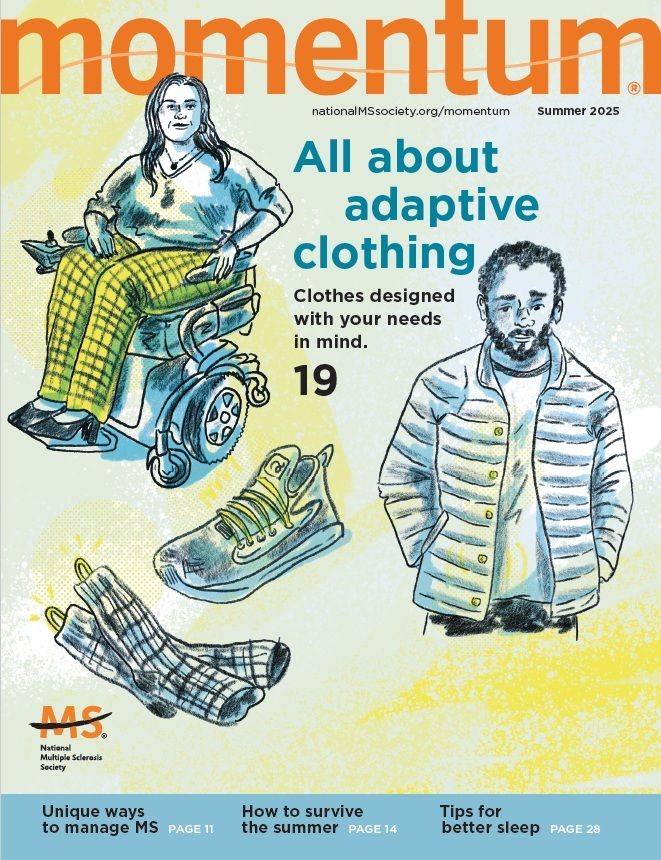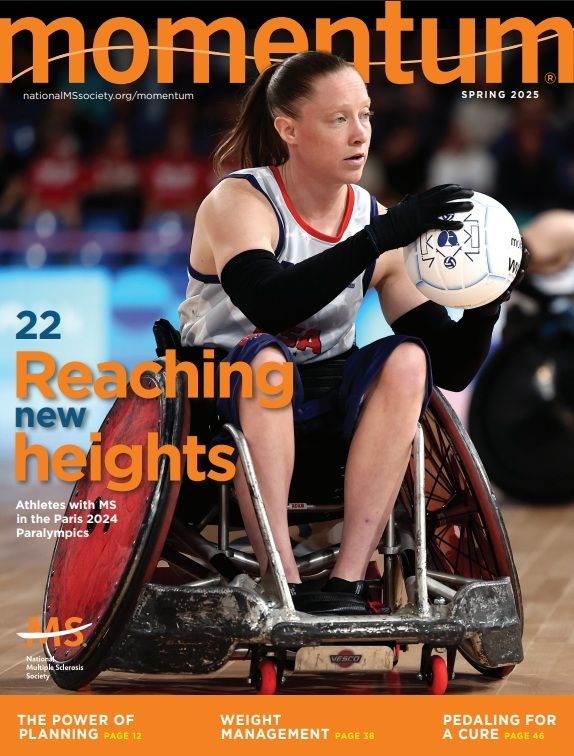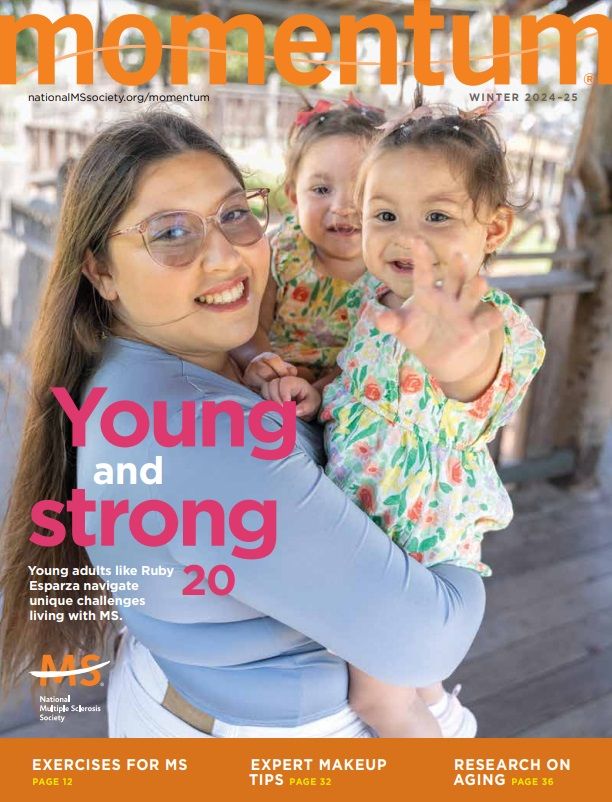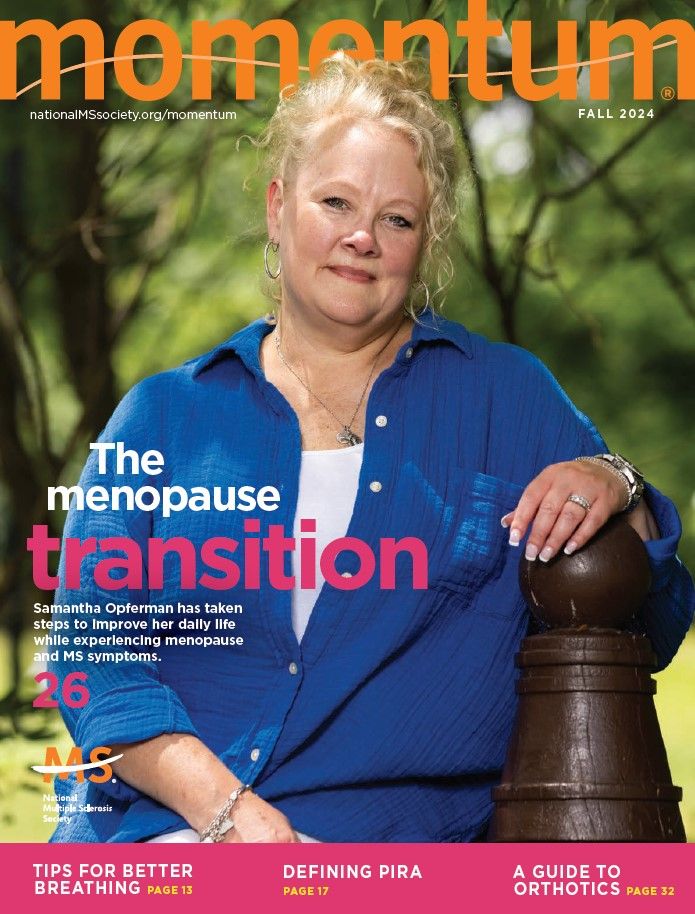Adaptive Clothing for Multiple Sclerosis
Get dressed — and undressed — more easily and independently with clothes designed with your needs in mind.
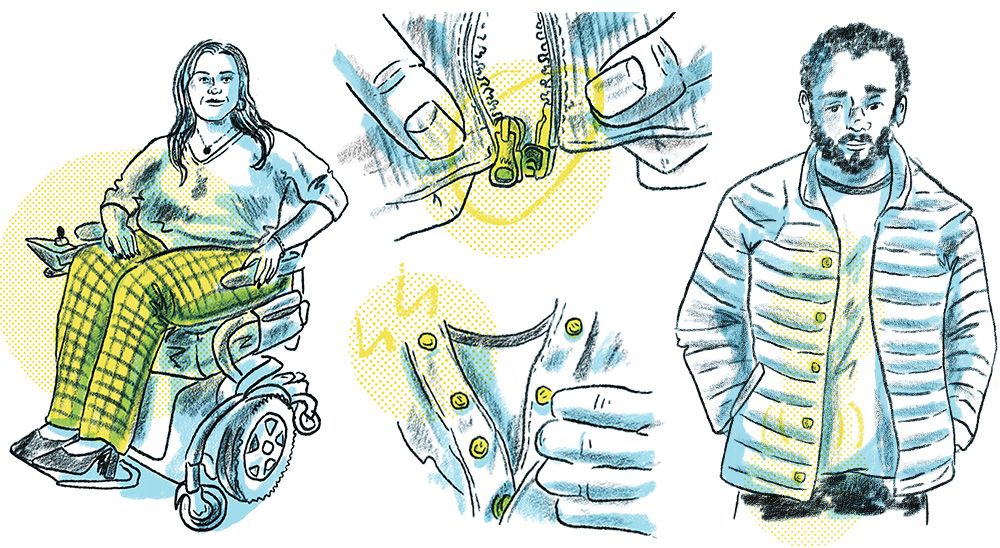
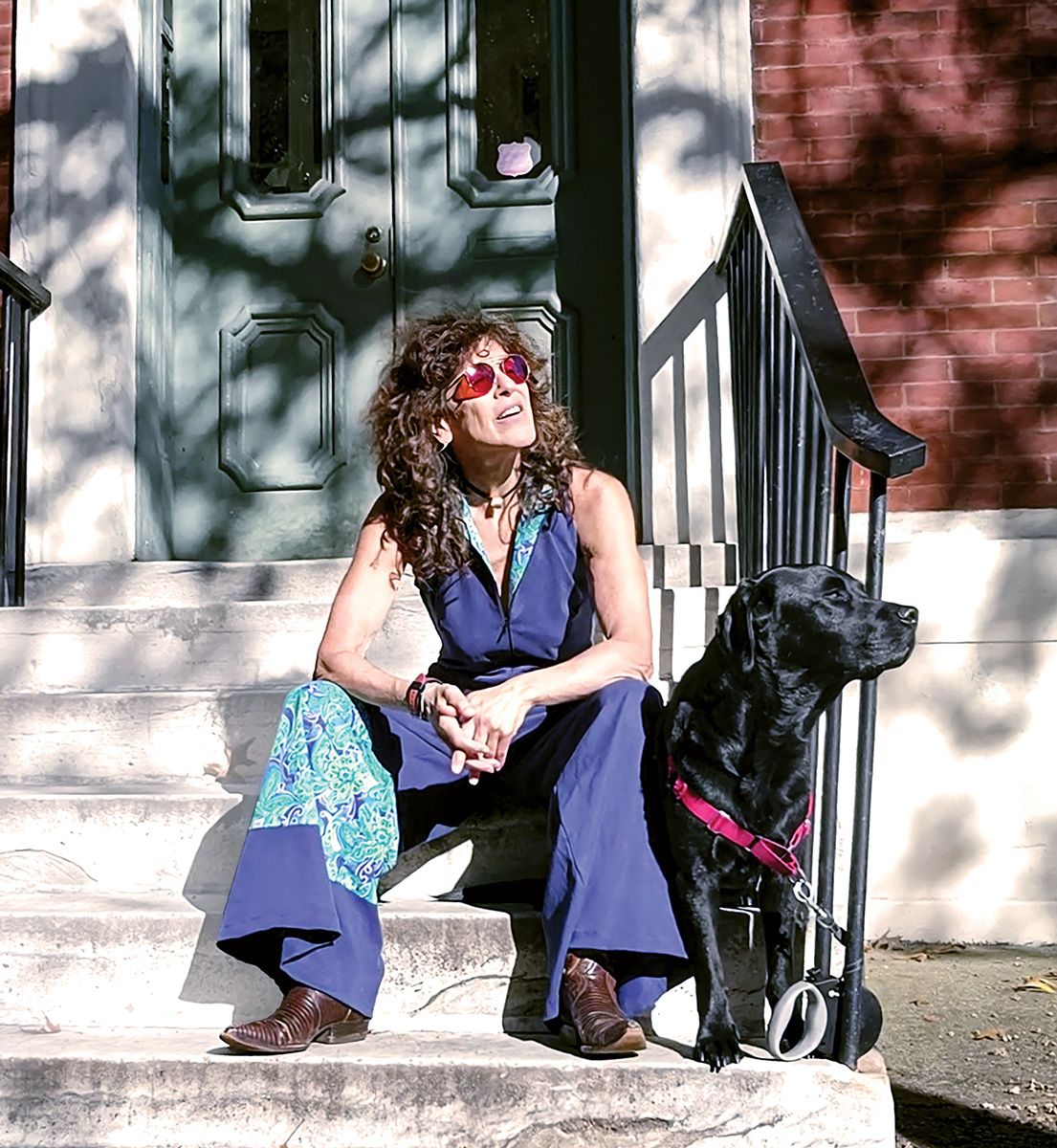
Challenges of Getting Dressed
- Weaker arms, hands or legs can make it tough to maneuver limbs into garments. “Putting on a shirt is very hard because you have to fit your head and arms through small holes,” Zackowski says.
- Numbness, tingling or diminished sensation makes it hard to dress and undress. “When you put socks on, you point your toes, even if you don’t realize you’re doing it,” Zackowski says. “But if you can’t feel your feet, it’s harder to do that.”
- Muscle tightness and spasms limit coordinated movements, like tying shoelaces, fastening straps, buttons or hooks, or putting legs in pants or arms through sleeves.
- Trying to stay steady while stepping into pants and shoes puts you at risk of falls. Cooper, who has balance issues, sought to minimize the number of steps needed to put on her jumpsuit. “One zipper does it all,” she says.
- When you use the bathroom frequently or urgently, complicated closures could cause accidents. And you might want to try a newer textile designed for incontinence. “There are materials that manage moisture in multiple directions,” Zackowski says. “They wick moisture away from skin but also prevent leakage.”
- Heat sensitivity, which can come with MS, makes certain fabrics uncomfortable and impractical.
- Since certain fabrics and tight fits can cause discomfort and even nerve pain, adaptive clothes tend to be soft and seamless and move with your body.
Types of Adaptive Clothing
- Adaptive tops and shirts trade buttons for magnetic closures, Velcro or snaps at the front or along the side. Tops can also open in the back for easy carepartner access. “Instead of pulling it over your head, you can enter it, like a gown at the doctor’s office,” Zackowski says. You can also find stretchy pullover shirts with wider necklines.
- Adaptive pants and bottoms feature elastic waists, side zips, snaps or Velcro closures.
- Wheelchair-friendly pants have higher backs and lower fronts for comfort when seated. They also have an elastic waist, a pull tab for easy on and off and accessible front pockets. An important element of any wheelchair-adaptive pant, according to Izzy Camilleri, founder of IZ Adaptive, is that it be free of seams and pockets on the seat, to avoid pressure sores. For example, Camilleri created a patented seam-free design. “It literally can save a life,” she says. Camilleri upgrades seamless styles with leopard print and faux leather.
- Adaptive dresses and skirts have Velcro or snaps in front or in back for easy assistance from carepartners. Skirts have an elastic waist or a wrap-around style for easy on and off, some with a magnetic fastener.
- Adaptive undergarments feature magnets, snaps and front or side openings, and are free of seams or tags for people with sensory sensitivities. For example: bras made of soft cotton that fasten in the front with Velcro; cotton and spandex briefs with Velcro side openings that can be put on standing, sitting or lying down; underwear that looks like any other traditional undies but are very absorbent.
- Adaptive outerwear fastens with magnets, zippers or wide-pull loops. For people who use a wheelchair, some companies offer ponchos and capes that add warmth without the struggle of sleeves.
- Adaptive footwear offers slip-on styles with elastic closures and no-tie laces. Zackowski also recommends using stretch laces to turn traditional tie shoes into slip-ons.
- Adaptive accessories include compression socks with side zippers and socks with loops for easy pull-up, gloves with Velcro fasteners and easy-grip materials, belts that can be fastened with one hand and necklaces with magnetic closures.
- Wearables are high-tech gadgets that can help with MS issues: a variety that help control body temperature, sleeves for arms or legs that deliver electrical stimulation to muscles to improve mobility and prevent foot drop, light-weight shoes that help wearers overcome obstacles to walking and hoodies designed to accommodate IV infusions.
The Market for Adaptive Clothing








